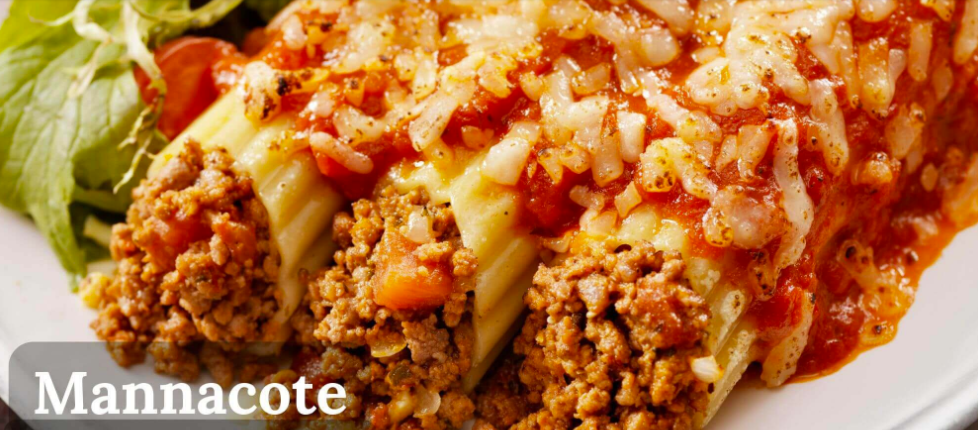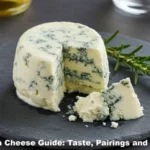Mannacote is an essential ingredient in a variety of applications, particularly in the food, cosmetics, and pharmaceutical industries. This comprehensive guide delves into everything you need to know about Mannacote, exploring its benefits, uses, and much more. Whether you’re in manufacturing, marketing, or just looking to learn more about this substance, this article provides a detailed overview.
What is Mannacote?
Mannacote is a modified starch product derived from mango seeds. It is primarily used as a food additive due to its binding, thickening, and stabilizing properties. Its versatility makes it a popular choice across various industries, including food production, cosmetics, and pharmaceuticals.
Key Properties of Mannacote:
- Binding Agent: Helps in the formation of uniform mixtures and holds products together.
- Thickening Agent: Used to adjust the consistency of food and cosmetic products.
- Stabilizer: Adds stability to emulsions and other mixtures, preventing separation.
Key Benefits of Mannacote
Mannacote offers numerous benefits in different industries. Here are the primary advantages that make it highly valued:
1. Food Industry Benefits
- Natural Ingredient: Since Mannacote is derived from mango seeds, it is considered a natural ingredient, which is highly preferred in the modern consumer market.
- Improved Texture and Mouthfeel: It improves the texture of food products like sauces, soups, and processed foods, giving them a creamier and more enjoyable mouthfeel.
- Enhances Shelf-Life: Its stabilizing properties help extend the shelf life of food products, keeping them fresher for longer.
- Gluten-Free: As a starch derivative, Mannacote is naturally gluten-free, making it a safe choice for gluten-free food formulations.
2. Cosmetics and Skincare
- Hydrating Agent: Used in lotions, creams, and moisturizers, Mannacote helps lock moisture into the skin, keeping it hydrated.
- Improved Product Stability: It stabilizes emulsions in skincare formulations, preventing the breakdown of ingredients and ensuring consistency.
- Non-Toxic: Being a plant-derived ingredient, it is non-toxic, which makes it suitable for use in a wide range of cosmetic products.
3. Pharmaceutical Uses
- Controlled Drug Release: In pharmaceutical formulations, Mannacote is used in controlled-release tablets, helping the drugs release over time for sustained effects.
- Tablet Binder: It serves as an excellent binder in the production of tablets, ensuring uniformity and stability in pharmaceutical formulations.
Applications of Mannacote in Various Industries
Food Industry
Mannacote’s thickening and stabilizing properties make it an essential ingredient in food manufacturing. It is commonly found in:
- Sauces & Dressings: It improves viscosity, helping the sauce or dressing maintain a smooth texture.
- Ice Cream: It stabilizes the mixture, improving its creaminess and texture while preventing ice crystals from forming.
- Bakery Products: Used in dough to enhance texture, increase shelf-life, and improve the consistency of fillings and toppings.
Cosmetics and Personal Care
In cosmetics and personal care, Mannacote is utilized for its ability to create smooth, hydrating, and stable formulations. It is found in:
- Face Creams & Lotions: It contributes to a smooth, soft texture and helps retain moisture.
- Shampoos and Conditioners: Used to improve consistency and stabilize emulsions, making the products more effective and pleasant to use.
- Soaps: Helps in creating a firm texture and enhancing the product’s longevity.
Pharmaceutical Products
Mannacote plays a crucial role in the pharmaceutical industry as well. It is mainly used in the formulation of:
- Controlled-Release Tablets: Mannacote is used to control the rate at which the active ingredient is released into the body, improving the effectiveness of the medication.
- Capsules and Tablets: Its binding properties help in the formation of uniform and stable tablets.
How Mannacote is Manufactured
Mannacote is produced through the modification of starch from mango seeds. The process involves several steps:
1. Extraction of Mango Seed Starch
Mango seeds are harvested, and the starch is extracted through a process of washing and drying.
2. Modification of Starch
The extracted starch is then chemically modified to enhance its functional properties. This may involve hydrolysis, oxidation, or esterification, depending on the intended use.
3. Purification and Drying
After modification, the starch is purified to remove any impurities, followed by drying to form the final Mannacote product. It can be ground into a fine powder to be used in various applications.
Mannacote in Sustainable Practices
1. Eco-Friendly Ingredient
Since Mannacote is derived from mango seeds, which are typically discarded as waste, its production contributes to waste reduction and sustainability. By repurposing mango seeds, Mannacote helps reduce the environmental impact of mango farming and processing.
2. Biodegradable
Mannacote is biodegradable, making it an eco-friendly option for various industries. Its use in the cosmetic and food sectors ensures that it doesn’t contribute to environmental pollution when disposed of.
Comparing Mannacote with Other Starch Products
While Mannacote is unique in its properties, there are other starches commonly used in industries as well. Let’s compare Mannacote to some of the other popular starches:
| Property | Mannacote | Corn Starch | Tapioca Starch | Potato Starch |
|---|---|---|---|---|
| Source | Mango Seed | Corn | Tapioca Root | Potato |
| Binding | Excellent | Good | Moderate | Good |
| Thickening | Excellent | Good | Excellent | Good |
| Stabilizing | Excellent | Fair | Good | Fair |
| Gluten-Free | Yes | Yes | Yes | Yes |
| Sustainability | High | Moderate | Moderate | Moderate |
Mannacote’s unique composition allows it to outperform some other starches in areas like stabilization and binding, making it the preferred choice for certain applications, especially in food processing and cosmetics.
Challenges and Considerations When Using Mannacote
While Mannacote offers numerous benefits, it’s essential to be aware of some challenges and considerations when incorporating it into products:
- Cost: Mannacote can sometimes be more expensive compared to other starches, which could increase production costs.
- Source Availability: The availability of mango seeds can affect the supply of Mannacote. Since it is a specialized ingredient, fluctuations in mango harvests can influence availability.
- Compatibility: In certain formulations, Mannacote may not work well with other ingredients and may require additional testing to ensure optimal performance.
How to Incorporate Mannacote in Your Products
When incorporating Mannacote into your products, follow these guidelines:
1. Use in Appropriate Quantities
Start with small quantities to test how it affects the texture and stability of your product. Typically, Mannacote is used in amounts ranging from 0.5% to 5% of the total product composition.
2. Combine with Other Ingredients
Mannacote works well when combined with other ingredients like gums, proteins, or natural emulsifiers. Experiment with different combinations to achieve the desired effect.
3. Test for Compatibility
Make sure to conduct compatibility tests when adding Mannacote to new formulations. While it is generally stable, its interaction with other ingredients should be tested for desired outcomes.
Conclusion
Mannacote is a versatile, natural ingredient that offers significant benefits across various industries, particularly in food, cosmetics, and pharmaceuticals. Its binding, thickening, and stabilizing properties make it an essential additive for creating high-quality products. Furthermore, its sustainability and biodegradability make it an environmentally friendly option.
If you’re looking to innovate and create new products, Mannacote offers a unique edge in terms of functionality, quality, and sustainability. Whether you are developing a new food product, formulating cosmetic creams, or working on pharmaceutical formulations, Mannacote can help improve the performance and quality of your product.
For more insights on product innovation and ingredient sourcing, visit our website: Turbotechify.
FAQ
- What is Mannacote used for?
- Mannacote is used in the food, cosmetics, and pharmaceutical industries as a binder, thickener, and stabilizer.
- Is Mannacote gluten-free?
- Yes, Mannacote is gluten-free and safe for those with gluten sensitivity.
- What are the benefits of Mannacote in food products?
- It improves texture, extends shelf life, and provides a smooth mouthfeel in products like sauces and ice cream.
- Can Mannacote be used in skincare?
- Yes, Mannacote is commonly used in skincare for its hydrating and stabilizing properties.
- Is Mannacote environmentally friendly?
- Yes, being derived from mango seeds, Mannacote helps reduce waste and is biodegradable, making it an eco-friendly option.


